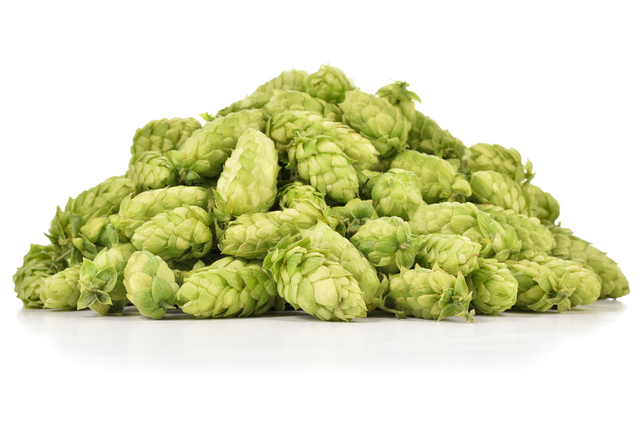
We did a report on 2019 hop production in January, and we noted production for Idaho, Oregon and Washington totaled a record high 112 million lbs, up 5 percent from the 2018 crop of 107 million lbs. Of course, the overall hop harvest was 1 million pounds bigger than that because hops are now being grown elsewhere outside of the PNW. That initial info came via the National Agricultural Statistics Service’s (NASS’s) Agricultural Statistics Board, which is part of the United States Department of Agriculture (USDA). That federal organization only has so much budget and bandwidth, so it doesn’t survey hop production outside of the Pacific Northwest.
Luckily, the always informed Hop Growers of America (HGA) has heads in bines all over the United States. HGA just released its 2019 Statistical Packet, which also draws from USDA-NASS info, but also the International Hop Growers Convention, the Barth Report, S.S. Steiner Guidelines for Hop Buying, USDA GATS database and possibly a Palantír.
Basically, this statistical packet is an insane amount of data that’s more accurate than almost anything out there, detailing everything from crop values and variety and acreage by state to alphas vs. aromas and even global beer brand market shares. It’s a metric ton of great info, and while the big headline was Even More Hops!, this report also highlights a lot of the industry’s complications.
“Thanks to the general nature of farming, every year seems to present a new combination of challenges for growers to overcome,” said Jaki Brophy, spokeswoman for Hop Growers of America and the Washington Hop Commission. “This year, overall, we are pleased with how the 2019 harvest went and how our growers adapted to overcome this year’s hindrances to meet the demand of customers and produce a high-quality crop. Thanks to a few different weather obstacles and a different propagation technique used this year by many farms, some growers and varieties had a few more issues to mitigate than others. On the whole, however, growers and merchants delivered quality hops to customers, fulfilling contracts and having some hops for the spot market as well.”
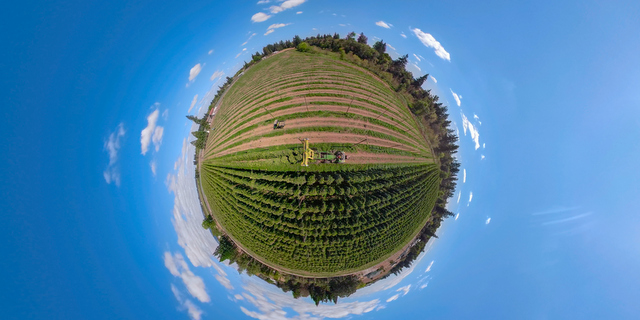
There certainly hasn’t been a slowdown in acreage. According to the 2019 Statistical Packet, commercial U.S. hop acreage increased another 2.6 percent in 2019, with total production exceeding the 2018 crop by a more precise 4.7 percent.
- Citra brand HBC 394 widened its lead as the U.S. hop acreage leader with more than 9,000 acres in the Pacific Northwest alone.
- Cascade held steady at the second spot,
- Simcoe YCR 14 nabbed third, Mosaic HBC 369 fourth and
- Centennial dropped to fifth place.
Fun fact: Proprietary hop varieties now hold half of the top 10 acreage slots.
While we reported 112 million lbs overall above, the HGA statistical packet says 2019’s production reached a new record of 113 million lbs, which includes an estimate for farms not counted by USDA-NASS. The HGA’s network estimates an additional 2,386 acres outside of the PNW, which yields another cool million lbs. Of course, the Pacific Northwest still reigned supreme with Washington producing 73.2 percent of the region’s hops, followed by Idaho (15.2 percent) and Oregon (11.6 percent).
But while average yields improved to 1,981 lbs per acre, production regions both inside and outside of the Pacific Northwest struggled with weather challenges. We’ve heard a cool and wet early spring proved tough for many baby hop crops, rain reappeared at the end of the harvest to give farmers more hurdles and windstorms depleted some varieties for spot availability.
“There is a sizable amount of hops that are being grown outside of the Pacific Northwest,” said Brophy optimistically, but she also cautioned newcomers looking to capitalize on a trending commodity. “People hear how high the spot cost is of Citra or they have a local brewery and hear folks complaining about the cost of Mosaic or that they can’t even get it. We find that there are some people who are starting up farms who don’t necessarily know enough about the processes, particularly about how expensive it is and business issues like contracting.”
Aroma acreage issues
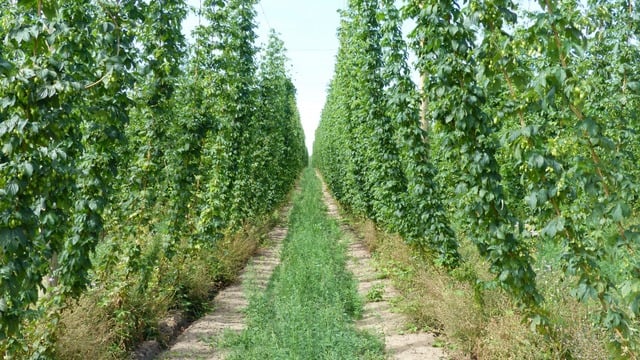
Rising costs have been a big deal in the hop industry. In fact, the market has almost doubled in the last eight years, and that’s caused problems. Since 2012, U.S. hop acreage has increased a crazy 98.7 percent from 29,683 to 58,977 acres. That has cost farmers and processers a lot of green. From the report:
Growers have faced substantial increases in the cost of production, driven by expansion of harvesting and production capacity to handle a doubling of acreage over the past 8 years, updating equipment, increased labor costs (including health care and other benefits), and inflation in the cost of production inputs. Administrative and operating costs associated with food safety, best practices compliance and other customer requirements have also increased. Lower yielding aroma varieties have a higher cost per pound to maintain a consistent gross income per acre.
The 2015 Washington State University Pacific Northwest Hop Cost of Production Study estimated the annual cost of producing standard trellis hops under drip irrigation in the PNW at $9,806 per acre (including fixed costs)…
2019 production costs were about $10,490 per acre (that is a conservative figure, as some costs have outpaced annual federal inflation estimates). This results in an estimated net income of $768 per acre in 2019.
“Now there are a lot of aroma varieties that are really popular,” said Brophy. “It’s not always the case, but a lot of them just don’t yield as high unfortunately. I mean, alphas are usually the ones that have really high yields. With aromas, you’re not getting the same yield out of the same acreage. Then you have to add more acreage just to get the same production amounts.”
Wondering about the split between bittering and finishing hops? During the last eight years, varieties has shifted from roughly 50/50 alpha vs. aroma hops in 2012 to 75.4 percent aroma varieties in 2019. In 2019, alpha represented only 24.6 percent of U.S. acreage, according to the report.

“Land is getting expensive for people too, particularly in Yakima and Oregon,” said Brophy. “So, that makes your price tag go up a bit if you are looking to expand, and at our convention in January we heard one or two people asking, ‘do we want to grow more?’ While this may be the sentiment of some, for the most part, the American hop industry has always been happy to respond quickly to the needs of the brewing industry. With some varieties dropping in popularity, switchouts [pulling out one variety to plant another] in acreage should continue to meet demand. The major challenge will be if too many harvest windows overlap.
“This would mean more picking machinery and harvesting facilities for stripping the cones off of the bine, for kiln drying the hops over several hours and then baling rooms — as well as staff for the same amount of production. As a result, breeding programs are also keeping harvest times in mind when considering new varieties in addition to a number of other variables. U.S. hop growers pride themselves on the level of quality consistently delivered, and keeping a somewhat manageable harvest schedule helps to ensure quality control of the crop.”
Commercial U.S. hop acreage increased another 2.6 percent in 2019. It just keeps going up. Will that growth continue is a big question for farmers and producers who have already invested so much in meeting the demand of the beer industry.
What does the future overall hold? Probably more rows.
“Each new growing year presents new combinations of obstacles to tackle. From what we are hearing, we are looking at another acreage increase to meet the still-growing demand of what is mostly popular IPA hops,” said Brophy. “As hopping rates go up and IPAs continue to be the king of craft, acreage, in turn, must grow to reflect that.
“It is important to note as well that with Germany and many other European farms, who have turned to focus primarily on the alpha market now, not having the benefit of irrigation, growers are adding back in some alpha acreage as well to ensure plentiful supply for the brewing industry. Some of these increases will translate to switchouts, but some will also be in added acres.
“Finally, with the new plantings from 2019 having a year to mature, it will be exciting to see how harvest 2020 shakes out. But, we have a whole growing season between now and then as we approach the start of field work for this year.”

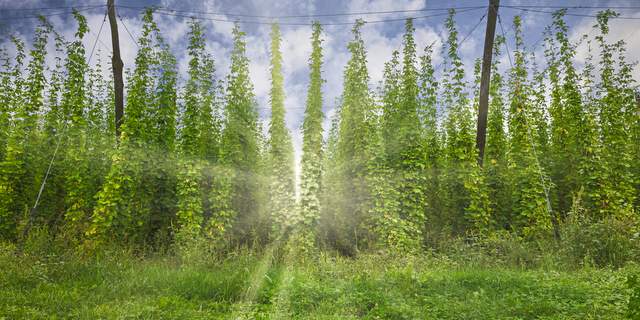
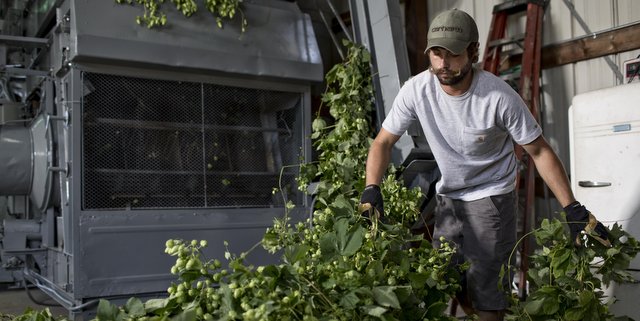

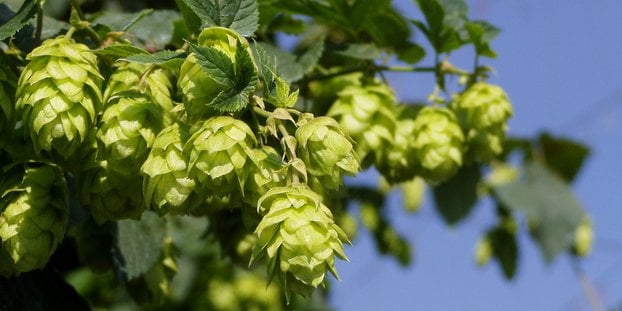
Leave a Reply
You must be logged in to post a comment.